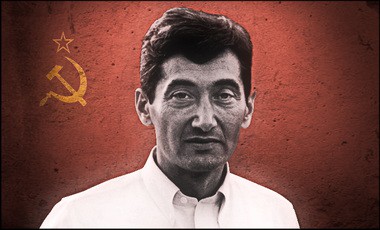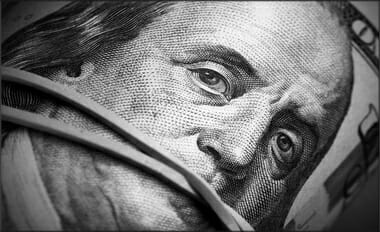- Theodore Draper, The Roots of American Communism (New Brunswick, NJ: Transaction Publishers, 2003), 13-17.
Also transferred across the Atlantic was the bitter feud between Karl Marx and Michael Bakunin, the son of a Russian nobleman and the father of modern revolutionary anarchism. Bakunin’s ideas and methods became the stock in trade of the nineteenth century’s revolutionary underground—the conspiratorial form of organization, the cult of violence, the loathing of all authority, the quixotic vision of liberty and equality through destruction and chaos. A Revolutionary Socialist party was organized in Chicago in 1881 by an extremist faction which split away from the Socialist Labor party. The arrival in New York the following year of a German Bakuninist, Johann Most, gave the anarchists a mordant spokesman. Most spread the gospel of the “propaganda of the deed,” “expropriation” of the rich, and the beauty of a well-placed stick of dynamite. The “Revolutionary Socialists” and the anarchists united at a convention in Pittsburgh in 1883 and drew up a platform proclaiming that “there is only one remedy left—force.” By 1885, this organization claimed about 7000 members, over twice as many as the politically minded Socialist Labor party.
In a well-ordered society, this sort of agitation might have been dismissed as the ravings of madmen. But the United States of this time was not a particularly well-ordered society. Thousands of immigrants poured into the country from Europe each year—almost 9,000,000 from 1881 to 1900. The relations between labor and capital were largely undefined and uncontrollable except by sheer force on both sides. Employers fought labor organizations by every possible means. Strikes were ruthlessly crushed by armed guards, police, sheriffs, militia, and federal troops. Court injunctions tied the hands of unions on the mere threat of a strike. Working conditions often ranged from the primitive to the abominable. Bad times followed good times with monotonous regularity.
In this inflammable social climate, socialism, trade unionism, and anarchism were not the only panaceas. When the A.F. of L. was formed, the Knights of Labor boasted three times the membership of the trade unions. The Knights, founded in 1869, came out of a period when labor organizations were compelled to work in secrecy
to overcome the lockouts, blacklists, and forcible resistance of employers. Originally conceived to promote education, mutual aid, and cooperation, it came to spend most of its energy on strikes and boycotts. In one respect, its struggles differed from those of the trade unions: the Knights organized the unskilled and semi-skilled, the trade unions the skilled workers. The decline of the Knights in the period 1886-1900 signified the ascendancy of the skilled craft labor of the trade unions, but the tradition of industrial unionism, which finally prevailed, goes back to the Knights of Labor.
The status quo was challenged from other directions. Henry George attacked land speculation as the source of all social evil and sought to stamp it out by taxing all profits from land equal to the full rental value—the “single tax.” In the great American utopian tradition, Edward Bellamy’s tremendously popular novel, Looking Backward, appeared in 1887. Bellamy’s hero awoke in the year 2000 A.D. to find a world of perfect virtue and virtuous perfection because the state had peacefully expropriated all private industrial enterprise and taken charge of the entire economy on a basis of equality and cooperation. Bellamy’s genteel and ethical vision of socialism appealed to many more native Americans than did Marx’s analysis of the class struggle, but some of those who started with Bellamy ended with Marx. The Christian Socialist movement arose in the late 1880s. Some Protestant thinkers and ministers fought sin in the guise of capitalism and sought salvation in the form of socialism. The essential ideals of socialism were scattered far and wide, and incorporated into many different systems of thought.
The official Socialist movement, however, was little more than a small, moribund, foreign-language sect until the Socialist Labor party was taken over by that imperious, eccentric, and magnetic personality, Daniel De Leon, in 1890. A lecturer on international law at Columbia University, De Leon had supported Henry George’s candidacy for mayor of New York in 1886 and had passed through both the Knights of Labor and the Bellamy movement. De Leon could not make the S.L.P. into a mass movement but he could give it an unprecedented theoretical vitality. The convert to Marxist doctrine quickly became its outstanding American interpreter and even went on to do his own thinking in order to fill the gigantic vacuum left by Marx on the nature of the future socialist state. De Leon was a doctrinaire, but a creative one, a combination rarely encountered in Marxian dogmatists. When the future Communist leaders were growing up, De Leon was already a force to be reckoned with, and he initiated some of them into the mysteries of Marxism before that other creative doctrinaire, Lenin, came along to replace him in their affections.
Industrial unionism and Bellamyite utopianism served Eugene Victor Debs as stepping stones to socialism. A former railway fireman born in Terre Haute, Indiana, Debs organized the American Railway Union on industrial-union lines in 1893. After a turbulent strike against the Pullman car company the following year, a sweeping court injunction, the intervention of government troops, and a debacle for the union, six months in jail for defying the injunction gave Debs the enforced leisure to start studying socialist literature. After this strike setback, Debs devoted himself to a scheme for the cooperative colonization of a sparsely settled Western state. Disappointed again, he announced his conversion to socialism in 1897. Instead of joining forces with De Leon in the Socialist Labor party, however, Debs formed a rival organization, the Social Democratic party, in 1898.
At about the same time, a rebellion began to erupt in the Socialist Labor party. The rebels, led by Morris Hillquit of New York, opposed De Leon’s domineering personal rule and his anti-A.F. of L. trade-union policy. After much negotiation and maneuvering, the forces behind Debs and Hillquit combined to form the Socialist party of America in 1901. It brought together Christian Socialists and orthodox Marxists, immigrant workers and native intellectuals, trade-union officials and millionaire social reformers. Only a few of the delegates at the first Socialist party convention “had more than the haziest intellectual acquaintance with theoretical Marxism,” writes David A. Shannon. “Certainly the anticapitalism of many of the delegates derived more from Edward Bellamy’s Looking Backward than from Das Kapital.”
Those who were looking for a militant, extremist movement, however, were no longer likely to find it in socialism. The most exciting new phenomenon in the labor movement in the first decade of the twentieth century—the most impressionable early years of the future Communists—was syndicalism. It arose in the Western states where the craft unionism of the A.F. of L. could not or would not penetrate. The original impulse came from the Western Federation of Miners, formed in 1893 with William D. (Big Bill) Haywood as secretary-treasurer. The mine federation, an industrial union, had stormed out of the A.F. of L., charging lack of support, and had retaliated by setting up independent Western Labor centers, first the Western Labor Union, then the American Labor Union. Finally, a conglomeration of anti-A.F. of L. elements, including those in the American Labor Union, the Socialist Labor party, and the Socialist party, met together to form the Industrial Workers of the World (I.W.W.) at Chicago in 1905. At the outset, it was big enough to hold Debs, De Leon, and Haywood—but not for long.
Though most of the organizers of the I.W.W., including Haywood, were avowed socialists, they did not agree on the road to socialism. The fundamental dispute hinged on the old problem of political versus economic action. Should political parties or trade unions or both make the revolution? The orthodox Marxists put their faith primarily in revolutionary parties; the syndicalists, in revolutionary trade unions. The original preamble of the I.W.W.’s constitution referred to a struggle “on the political as well as on the industrial field.” This phrase did not go far enough for those who believed in revolutionary political activity and went too far for those who believed solely in revolutionary trade unionism. Debs left the I.W.W. in 1906 because he felt that it underestimated the importance of political activity. De Leon was ousted in 1908 in a coup executed by an I.W.W. group more sympathetic to anarchism than to socialism. In that same year, the preamble was changed to eliminate the reference to political activity altogether. The I.W.W. developed into an American variety of anarcho-syndicalism whose battle cries were “direct action,” “sabotage,” and the “general strike.”
The Left Wing of the American labor movement before World War I had its deepest roots in two movements—socialism and syndicalism. Therefore it did not have a single home. It was in the main divided in its loyalties among three organizations—the Socialist Labor party, the Socialist party, and the I.W.W. But that elusive and yet indispensable term—the Left Wing—cannot be fully understood organizationally. There are usually a number of rival groups within the Left Wing, each claiming to be the only true Left. The Left Wing of one period differs from the Left Wing of other periods. This instability is characteristic of a term which does not stand for a party or a program but rather for a relative position, and often only for a vague state of mind.
Nevertheless, there has been something like a historic Left in the American labor movement. As one Left Wing has followed another, a number of basic issues have recurred again and again. Since the Left Wing was less an organization than a fluctuating body of attitudes and ideas, these issues, more than anything else, gave it an enduring character.



